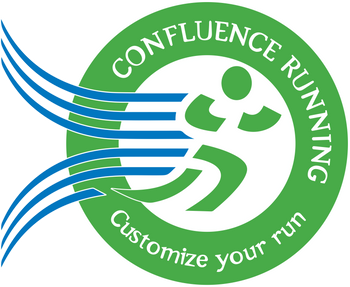Dynamic Footwear Science: How to Choose the Perfect Shoes for Performance and Injury Prevention

Dynamic Footwear Science: The Ultimate Guide to Proper Footwear for Performance and Health
Dynamic footwear science is the study of athletic shoes designed to adapt to the high-intensity demands of activities like walking, running, cutting, and jumping. The right footwear plays a pivotal role in preventing injuries, enhancing performance, and promoting overall foot health. This comprehensive guide delves into the critical components of dynamic footwear science, including sizing, biomechanics, durability, materials, and rotation strategies, providing a detailed framework for choosing the perfect pair.

The Importance of Proper Footwear Size
Wearing the correct shoe size is foundational for foot health and performance. A proper fit ensures there is about a thumb’s width of space between the tip of the shoe and the longest toe. Shoes that are too small can lead to issues like:
-
Bunions
-
Black Toenails
-
Blisters
-
Plantar Fasciitis
Dive In: Pyramid Training | Compound Sets vs Supersets | VO2 Max
Keep in mind that sneaker sizes often differ from formal shoe sizes. For instance, your sneaker size may be one to one-and-a-half sizes larger than your standard footwear. Ensuring the right fit is not just about comfort but also about preventing long-term foot problems.

Pronation vs. Supination: Understanding Biomechanics
Pronation is the inward roll of the foot during walking or running, while supination refers to the outward roll. Both movements are natural to an extent, but excessive pronation or supination can lead to injuries.
-
Neutral Gait: Balanced foot movement with equal pressure distribution.
-
Overpronation: Excessive inward rolling of the foot, often corrected with posted shoes featuring dynamic dual-density foam.
-
Oversupination: Excessive outward rolling, requiring neutral shoes for stability.
Dynamic footwear science addresses these issues through design innovations like:
-
Medial Posts: Firmer foam on the medial side of the shoe to reduce pronation.
-
Dual-Density Foam: Different foam densities that adapt under weighted pressure.

Neutral vs. Posted Shoes
Neutral shoes have balanced cushioning on both the medial and lateral sides, making them suitable for most people. Research suggests that 80% of individuals benefit from neutral shoes, while the remaining 20% require posted footwear for additional support.
Key differences:
-
Neutral Shoes: Equal density, low to high cushioning options.
-
Posted Shoes: Designed for overpronators with firm medial foam to reduce internal rotation of the tibia and knee stress.
Durability and Cushioning Levels
The durability of footwear depends on factors like foam quality, cushioning level, and usage patterns. Here’s a breakdown:
-
Low Cushioning: Minimal padding, ideal for ground contact feel. Typically lasts 100-200 miles.
-
Medium Cushioning: Balanced support and comfort, lasting 300-400 miles.
-
High Cushioning: Maximum shock absorption, with a lifespan of 400-500 miles.
Proper cushioning is essential for individuals who stand or walk for extended periods, such as healthcare workers or retail employees. Choosing high-quality foam ensures better support and reduces injury risks.
Price Points and the Footwear Industry
Athletic footwear is part of a price-protected industry, meaning prices remain consistent across retailers during the product’s lifecycle. For example, a new model might be priced at $130 regardless of where it is sold. Older models may be discounted, offering a more budget-friendly option without compromising quality. Always ensure:
-
Original MSRP is $130 or higher.
-
Clearance shoes are high-quality models from previous seasons.
Heel-to-Toe Drop: Impact on Biomechanics
Heel-to-toe drop measures the difference in cushioning height between the heel and forefoot. A lower drop promotes a more natural foot strike but requires a gradual transition to avoid injury.
-
High Drop (10-12mm): Suitable for individuals with tight calves or Achilles issues.
-
Low Drop (0-6mm): Encourages natural biomechanics, ideal for weightlifting and functional fitness.
Transitioning from a high to low drop should be done gradually to prevent stress on the Achilles tendon and calf muscles.

Footwear Contour and Fit
Footwear contour refers to the shape and structure of the shoe, designed to match different foot types:
-
Aggressive Contour: Narrow fit, ideal for slim feet.
-
Straight Last: Wide fit, suitable for broader feet.
Choosing the right contour ensures comfort and prevents pressure points. For example, someone with a wide foot should avoid narrow, aggressively contoured shoes.
Rotation of Shoes and Injury Prevention
A Luxembourg study found that rotating between 3-4 pairs of different shoe models reduces injury risk by 39%. This strategy minimizes repetitive stress on the same pressure points. Recommendations:
-
Rotate two pairs every year.
-
Opt for different brands or models to vary pressure distribution.
Toe Box Anatomy
The toe box is the forward-most area of the shoe, essential for accommodating toe splay and balance. Modern designs emphasize wider toe boxes to improve functionality and reduce issues like:
-
Blisters
-
Toenail trauma
-
Imbalance during squats or lunges
Brands like Altra specialize in wide toe box designs, promoting natural toe splay for enhanced stability.
Summary of Key Considerations
-
Proper Size: Ensure thumb’s width at the toe.
-
Pronation vs. Supination: Identify gait style and choose neutral or posted shoes accordingly.
-
Durability: Match cushioning levels to activity and body weight.
-
Price Points: Invest in high-quality footwear ($130+ MSRP).
-
Heel-to-Toe Drop: Select appropriate drop for biomechanics and activity.
-
Contour: Match shoe shape to foot structure.
-
Rotation: Alternate shoes to reduce injury risk.
-
Toe Box: Opt for a wide toe box for better toe splay and balance.
Conclusion
Dynamic footwear science provides a systematic approach to selecting the right athletic footwear for health, performance, and injury prevention. By understanding the variables that impact fit and function—from pronation to toe box anatomy—you can make informed decisions that support your fitness goals. Invest in high-quality footwear, rotate your shoes, and pay attention to individual needs to maximize comfort and performance.
All HWS Lecture Series Links
| Lectures | Link |
|---|---|
| Mastering SMART Goals | Mastering SMART Goals |
| Concept of Overload | Concept of Overload |
| Periodization Theory | Periodization Theory |
| Muscular Anatomy | Muscular Anatomy |
| Overview of Basic Biomechanics | Overview of Basic Biomechanics |
| Metabolism and Energy Systems | TBD |
| What is VO2 Max? | What is VO2 Max? |
| Overview of Heart Rate Training Zones | TBD |
| Biological Discussion Wrap-Up | TBD |
| Dynamic Footwear Science | Dynamic Footwear Science |
| Basic Nutrition | Basic Nutrition |
| Circuit Training | Circuit Training |
| Pyramid Training | Pyramid Training |
| Compound Sets vs Supersets | Compound Sets vs Supersets |
| Myers Briggs Personality & Fitness | TBD |
| How to Improve Your Motivation in Fitness | TBD |
| Positive & Negative Reinforcement & Punishment | TBD |
| How do Plyometrics Aid in Adaptations? | How do Plyometrics Aid in Adaptations? |
| Enhance Your Fitness with Recovery Techniques | TBD |
Tags for Dynamic Footwear Science
Dynamic Footwear Science, Proper Shoe Fit, Athletic Footwear Guide, Pronation vs. Supination, Neutral Shoes, Posted Shoes, High-Quality Cushioned Shoes, Heel-to-Toe Drop, Biomechanics of Footwear, Preventing Foot Injuries, Shoe Durability Tips, Wide Toe Box Benefits, Shoe Rotation for Athletes, Best Shoes for Running, Footwear for Injury Prevention, Choosing Athletic Shoes, High-Performance Footwear, Foot Contour and Shoe Fit, Reducing Injury with Proper Footwear, Dynamic Shoe Design.


